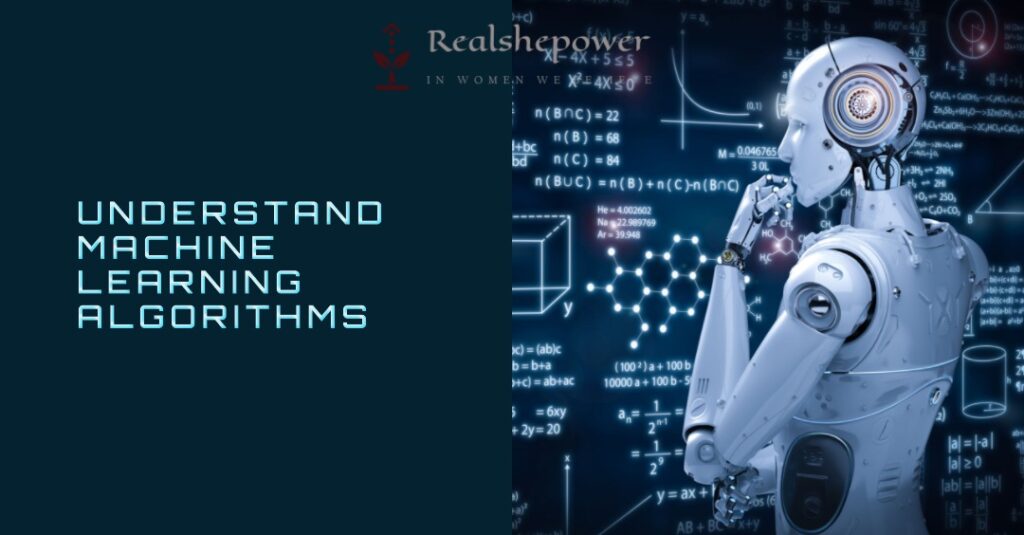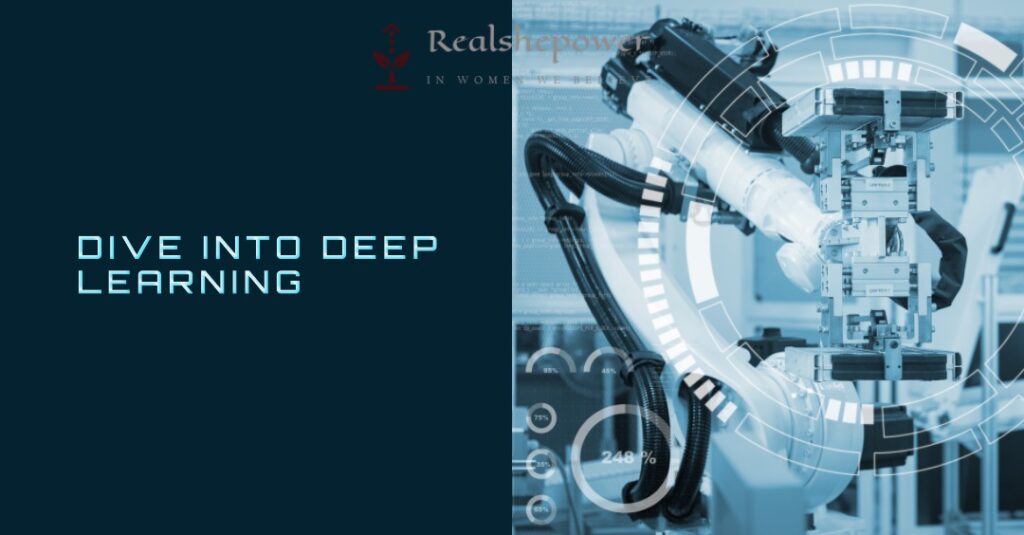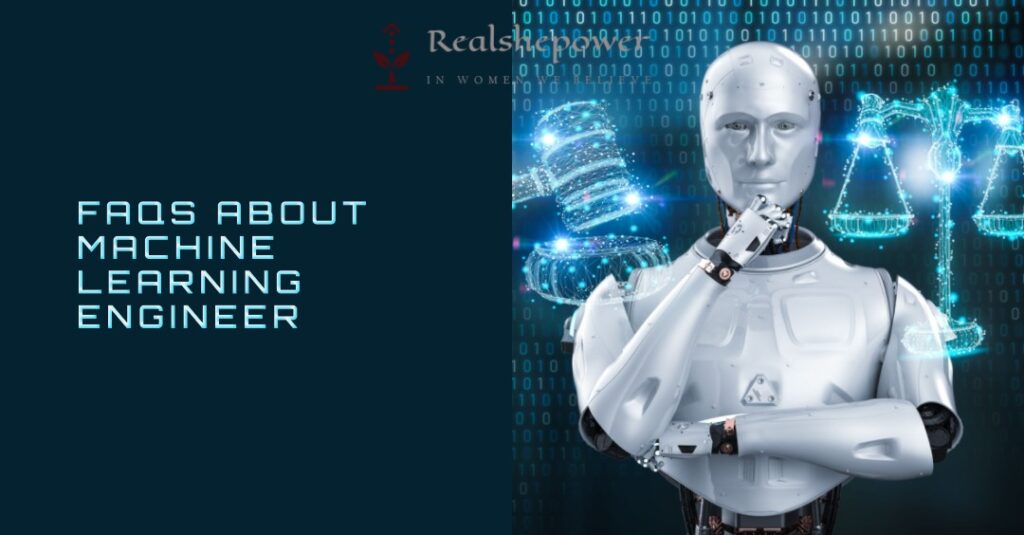How To Become A Machine Learning Engineer?


Introduction
In today’s era of digital transformation, machine learning has emerged as a game-changer across industries. From self-driving cars to personalized recommendations, machine learning has revolutionized the way we interact with technology. As a machine learning engineer, you will be at the forefront of this transformation, leveraging algorithms and data to create intelligent systems that can learn and improve from experience.
So, how to Become a machine learning engineer? how can you embark on this exciting career path? Let’s dive into the essential steps and skills required to become a machine learning engineer.
Table of Contents
1. Master the Fundamentals of Mathematics and Statistics

To become a proficient machine learning engineer, it is crucial to develop a strong foundation in mathematics and statistics. These disciplines provide the necessary tools and concepts to understand the inner workings of machine learning algorithms. By mastering the fundamentals, you will be able to navigate the complexities of this field with confidence. Here’s a breakdown of the key areas to focus on:
1.1 Dive into Linear Algebra and Calculus
Linear algebra and calculus are two pillars of mathematics that are deeply intertwined with machine learning. A solid understanding of these subjects will empower you to comprehend the underlying principles of machine learning algorithms. Here’s what you need to dive into:
a) Matrices and Vectors
Matrices and vectors are fundamental components of linear algebra. Learn about matrix operations such as addition, subtraction, multiplication, and transposition. Understand vector spaces, dot products, and cross products. Grasp concepts like eigenvalues, eigenvectors, and matrix factorizations. These concepts will help you manipulate data and perform computations efficiently.
b) Differentiation and Integration
Calculus plays a vital role in optimizing machine learning algorithms and understanding their behavior. Gain proficiency in differentiation and integration techniques. Learn how to compute derivatives to find critical points, optimize functions, and train models. Understand the concept of gradients and how they contribute to gradient descent, a widely used optimization algorithm in machine learning.
c) Probability and Statistics
Probability theory and statistics are indispensable for understanding uncertainty, modeling data distributions, and making informed decisions in machine learning. Dive into concepts like probability distributions, statistical inference, hypothesis testing, and regression analysis. Learn how to measure and interpret uncertainty using tools such as confidence intervals and p-values. These skills will enable you to build robust models and evaluate their performance accurately.
1.2 Embrace Discrete Mathematics
While continuous mathematics forms the foundation, discrete mathematics is equally important in machine learning. Discrete mathematics deals with objects that have distinct and separate values, which aligns with the nature of data in machine learning. Here are some key areas to explore:
a) Set Theory and Logic
Set theory and logic provide a framework for reasoning and analyzing data. Understand set operations, set notation, and set relationships. Master logical operators, propositional logic, and predicate logic. These concepts are useful for formulating hypotheses, defining conditions, and creating logical rules within machine learning models.
b) Graph Theory
Graph theory is valuable for understanding complex relationships and dependencies within data. Learn about graph representations, graph algorithms, and graph properties. Explore concepts like shortest paths, connectivity, and centrality measures. Graph theory is particularly relevant in tasks such as network analysis, recommendation systems, and natural language processing.
1.3 Apply Mathematics and Statistics to Machine Learning
Once you have a solid grasp of the mathematical and statistical fundamentals, it’s time to apply them to machine learning. Here’s how you can bridge the gap between theory and practice:
a) Feature Engineering
Feature engineering is the process of selecting, transforming, and creating meaningful features from raw data. Leverage your understanding of linear algebra and statistics to identify relevant features, perform dimensionality reduction, and normalize data. By applying mathematical techniques, you can enhance the quality and predictive power of your features, thereby improving the performance of machine learning models.
b) Algorithm Evaluation and Model Selection
Mathematics and statistics provide the tools to evaluate the performance of machine learning algorithms and select the most appropriate models. Learn about evaluation metrics such as accuracy, precision, recall, and F1-score. Understand concepts like overfitting, underfitting, bias-variance tradeoff, and cross-validation. By leveraging statistical techniques, you can make informed decisions about model selection and fine-tuning.
c) Optimization Algorithms
Optimization algorithms lie at the heart of machine learning. These algorithms aim to find the optimal parameters that minimize the error or loss function of a model. With a strong foundation in calculus, you can understand optimization algorithms such as gradient descent, stochastic gradient descent, and variants like Adam and RMSprop. By leveraging these algorithms effectively, you can train models efficiently and achieve better performance.
2. Learn Programming and Data Manipulation

Programming skills and data manipulation techniques are crucial for a machine learning engineer. These skills enable you to implement and manipulate data to build powerful machine learning models. Here’s how you can strengthen your proficiency in programming and data manipulation:
2.1 Embrace Python as Your Go-To Language
Python has become the de facto programming language for machine learning due to its simplicity, versatility, and extensive ecosystem of libraries. To excel as a machine learning engineer, it is essential to become proficient in Python. Start by familiarizing yourself with Python syntax and basic concepts such as variables, data types, loops, and conditional statements. Once you have a solid foundation, delve into the world of Python libraries that are widely used in machine learning, such as NumPy, Pandas, and Matplotlib.
NumPy provides powerful numerical computing capabilities, Pandas offers efficient data manipulation and analysis tools, while Matplotlib allows you to visualize data and create insightful plots. Mastering these libraries will greatly enhance your ability to work with data effectively.Additionally, explore popular machine learning frameworks and libraries built on top of Python, such as TensorFlow, Keras, PyTorch, and scikit-learn. These libraries provide pre-built functions and tools to implement machine learning algorithms efficiently, saving you time and effort.
2.2 Grasp Data Manipulation Techniques
Data manipulation is a vital aspect of machine learning. Before you can feed data into your machine learning models, you need to preprocess and transform it appropriately. Here are some key techniques to focus on:
a) Data Cleaning
Real-world datasets often contain missing values, outliers, and inconsistencies. Learn how to handle missing data by imputing or removing it based on appropriate strategies. Deal with outliers by detecting and either removing or treating them. Additionally, ensure data consistency by standardizing or normalizing features to a common scale.
b) Feature Engineering
Feature engineering involves selecting, creating, or transforming features in your dataset to improve model performance. Learn techniques such as one-hot encoding, feature scaling, binning, and feature extraction. By engineering meaningful features, you can provide better input to your machine learning models and uncover hidden patterns in the data.
c) Data Integration and Transformation
Often, data comes from multiple sources and may require integration or merging. Learn techniques to combine datasets based on common fields or perform joins to create a unified dataset. Also, understand how to transform data to meet the requirements of different algorithms, such as reshaping data for time series analysis or converting categorical variables into numerical representations.
d) SQL and Database Management
In many machine learning projects, you will work with large datasets stored in databases. Familiarize yourself with SQL (Structured Query Language) to efficiently query and manipulate data in relational databases. Understand concepts such as table creation, data insertion, retrieval, filtering, and aggregation. Proficiency in SQL will enable you to handle extensive datasets and extract relevant information for your machine learning tasks.
e) Practice Data Wrangling
Data wrangling involves the process of gathering, cleaning, transforming, and preparing data for analysis. It requires attention to detail, critical thinking, and the ability to handle messy and unstructured data effectively. Take up real-world datasets, challenge yourself to clean and preprocess them, and practice manipulating the data to extract meaningful insights. Participate in Kaggle competitions or open-source projects that provide access to diverse datasets. This will allow you to gain hands-on experience with different types of data and apply various data manipulation techniques. The more you practice, the more confident you will become in working with different data formats, cleaning data, and transforming it to meet the requirements of your machine learning models.
Remember, programming and data manipulation skills go hand in hand in the journey of becoming a proficient machine learning engineer. Continuously strive to improve your coding abilities, explore new libraries and frameworks, and hone your data manipulation techniques. These skills will empower you to handle complex datasets and build robust machine learning models that deliver accurate and meaningful results.
3. Understand Machine Learning Algorithms

To become a proficient machine learning engineer, it is essential to have a deep understanding of various machine learning algorithms. These algorithms serve as the building blocks of intelligent systems that can learn from data. Here are some key areas to focus on when it comes to understanding machine learning algorithms:
3.1 Supervised Learning
Supervised learning is one of the fundamental branches of machine learning. In this approach, the algorithm learns from labeled data, where each data point is associated with a corresponding target or output value. Here are some important supervised learning algorithms to explore:
- Linear Regression: Linear regression is a popular algorithm used for predicting continuous numerical values. It models the relationship between the input features and the output variable by fitting a linear equation.
- Logistic Regression: Logistic regression is a binary classification algorithm used to predict the probability of an event occurring. It is commonly employed when the target variable has two possible outcomes.
- Decision Trees: Decision trees are versatile algorithms that can be used for both classification and regression tasks. They create a hierarchical structure of decisions based on features, leading to a series of nodes and branches that ultimately lead to a predicted outcome.
- Support Vector Machines (SVM): SVM is a powerful algorithm for both classification and regression. It finds an optimal hyperplane that maximally separates data points of different classes or predicts the value of a continuous variable based on support vectors.
3.2 Unsupervised Learning
Unlike supervised learning, unsupervised learning deals with unlabeled data, where the algorithm aims to find patterns or structure in the data without prior knowledge of the output. Here are some significant unsupervised learning algorithms to delve into:
- Clustering: Clustering algorithms group similar data points together based on their intrinsic characteristics. K-means clustering, hierarchical clustering, and DBSCAN (Density-Based Spatial Clustering of Applications with Noise) are widely used clustering techniques.
- Dimensionality Reduction: Dimensionality reduction techniques aim to reduce the number of features in a dataset while retaining the most important information. Principal Component Analysis (PCA) and t-SNE (t-Distributed Stochastic Neighbor Embedding) are commonly employed for this purpose.
- Generative Models: Generative models, such as Gaussian Mixture Models (GMM) and Variational Autoencoders (VAEs), are used to model the underlying distribution of data. These models can generate new data points similar to the ones they were trained on.
3.3 Reinforcement Learning
Reinforcement learning is a branch of machine learning that deals with training agents to make sequential decisions in an environment to maximize a reward. Reinforcement learning algorithms learn through trial and error by interacting with an environment. Here are some key concepts and algorithms in reinforcement learning:
- Markov Decision Process (MDP): MDP is a mathematical framework used to model decision-making in a sequential environment. It consists of states, actions, transition probabilities, and rewards.
- Q-Learning: Q-learning is a popular model-free reinforcement learning algorithm that uses a value function called Q-value to estimate the expected cumulative reward for taking a particular action in a given state.
- Deep Q-Networks (DQN): DQN is a deep learning-based approach that combines Q-learning with deep neural networks. It has been successful in solving complex reinforcement learning problems by using deep neural networks to approximate the Q-value function.
Understanding these machine learning algorithms and their underlying principles will enable you to select the appropriate algorithm for a given problem, fine-tune its parameters, and interpret its results. Additionally, staying updated with the latest advancements in the field and exploring newer algorithms such as XGBoost, Random Forests, and Deep Reinforcement Learning will expand your knowledge and enhance your capabilities as a machine learning engineer.
4. Dive into Deep Learning

Deep learning, a subset of machine learning, has gained immense popularity due to its ability to tackle complex problems. It involves training neural networks with multiple layers to learn hierarchical representations of data. Here’s what you need to know to dive into the world of deep learning:
4.1 Understand Neural Networks and Deep Architectures
Neural networks are the backbone of deep learning. They are composed of interconnected nodes, called neurons, that mimic the structure and functioning of the human brain. By combining these neurons into layers, neural networks can learn intricate patterns and relationships within the data.
a) Start with Feedforward Neural Networks:
- Feedforward neural networks are the simplest form of neural networks, where information flows in only one direction, from input to output. They consist of an input layer, one or more hidden layers, and an output layer.
- Learn about activation functions, such as sigmoid, ReLU, and tanh, which introduce non-linearities and help neural networks model complex relationships.
- Understand the concept of backpropagation, which involves updating the weights and biases of the network to minimize the prediction error during training.
b) Explore Convolutional Neural Networks (CNNs):
- CNNs excel in image and video processing tasks. They leverage convolutional layers to extract local features from images and learn spatial hierarchies.
- Delve into concepts like pooling layers, which downsample the feature maps, and convolutional filters, which detect specific patterns in the data.
- Understand popular architectures like AlexNet, VGGNet, and ResNet, which have achieved remarkable performance in image classification tasks.
c) Delve into Recurrent Neural Networks (RNNs):
- RNNs are designed to handle sequential and time-series data. They introduce feedback connections that allow information to persist across time steps.
- Learn about different types of RNN cells, such as Long Short-Term Memory (LSTM) and Gated Recurrent Unit (GRU), which address the vanishing gradient problem and capture long-term dependencies.
- Explore applications of RNNs in natural language processing, speech recognition, and machine translation.
4.2 Grasp Advanced Deep Architectures
As deep learning has progressed, several advanced architectures have emerged to tackle specific challenges. Familiarize yourself with these architectures to stay at the forefront of deep learning research:
a) Deep Convolutional Networks (DCNs):
- DCNs are deep neural networks with multiple convolutional layers. They can learn complex hierarchical representations of images and excel in tasks like object detection and semantic segmentation.
- Explore architectures like U-Net, Mask R-CNN, and YOLO, which have revolutionized computer vision tasks by enabling accurate and efficient object detection and image segmentation.
b) Transformers:
- Transformers have transformed the field of natural language processing (NLP) and achieved state-of-the-art results in tasks like machine translation and language understanding.
- Understand the self-attention mechanism, which allows transformers to capture global dependencies in the input sequences.
- Explore transformer architectures like BERT, GPT, and T5, which have pushed the boundaries of NLP and opened new possibilities in language generation and understanding.
c) Generative Adversarial Networks (GANs):
- GANs are a powerful class of generative models that consist of two networks, a generator and a discriminator, competing against each other.
- Learn about the training process, where the generator tries to generate realistic data, while the discriminator aims to distinguish between real and fake samples.
- Discover applications of GANs in generating realistic images, synthesizing new data samples, and enhancing data augmentation techniques.
By diving into deep learning and mastering neural networks and advanced architectures, you can leverage the power of deep learning to solve complex problems and unlock new possibilities across various domains.
Remember, practice and experimentation are key to developing a deep understanding of deep learning. Continuously explore new research papers, participate in Kaggle competitions, and undertake personal projects to refine your skills and stay up to date with the latest advancements.
5. Gain Hands-on Experience and Build a Portfolio

When it comes to becoming a machine learning engineer, gaining hands-on experience and building a portfolio of projects is crucial. Practical application not only solidifies your understanding of concepts but also demonstrates your proficiency to potential employers. Here’s how you can gain valuable experience and create an impressive portfolio:
a) Implement Personal Projects
Start by working on personal projects that align with your interests and goals. Choose a problem or a domain that fascinates you, and leverage your machine learning skills to develop solutions. This could be anything from image classification to natural language processing or even predictive analytics. By working on personal projects, you can explore your creativity, experiment with different algorithms, and showcase your problem-solving abilities.
b) Participate in Kaggle Competitions
Kaggle is a popular online platform that hosts machine learning competitions. Participating in Kaggle competitions allows you to tackle real-world challenges and learn from the best in the field. By competing against other data scientists and machine learning enthusiasts, you can refine your skills, gain insights from different approaches, and benchmark your performance. The experience of working on Kaggle projects and achieving good rankings adds credibility to your portfolio.
c) Collaborate on Open-Source Projects
Engaging in open-source projects provides an excellent opportunity to contribute to the machine learning community while enhancing your skills. Joining open-source projects such as TensorFlow, scikit-learn, or PyTorch enables you to work alongside experienced developers, gain exposure to industry-standard practices, and learn from feedback and code reviews. Your contributions to these projects will not only showcase your technical abilities but also highlight your teamwork and collaboration skills.
d) Internships and Research Opportunities
Seek internships or research opportunities in companies or academic institutions that focus on machine learning. These experiences allow you to work on real-world problems, collaborate with professionals in the field, and gain industry insights. Internships also provide networking opportunities and the chance to learn from mentors who can guide you in your career progression. Additionally, publishing research papers or presenting your findings at conferences can further bolster your portfolio.
e) Create a GitHub Repository
As you work on projects, create a GitHub repository to showcase your code, methodologies, and project outcomes. A well-organized and documented repository demonstrates your ability to write clean and maintainable code, as well as your proficiency in using version control systems. Consider including a README file that provides an overview of the project, explains the problem statement, highlights the techniques used, and presents the results achieved. Make your repository accessible to others and ensure that it reflects your dedication to learning and improvement.
f) Develop a Personal Website or Blog
Building a personal website or blog can be a powerful way to showcase your projects, share your knowledge, and establish your online presence as a machine learning enthusiast. Display your portfolio, write about your experiences and insights gained from different projects, and provide tutorials or explanations of machine learning concepts. This not only demonstrates your expertise but also allows potential employers to get a glimpse of your passion for the field.
Remember, the quality of your projects and the impact they have are more important than the quantity. Focus on building a few high-quality projects that showcase your diverse skill set and problem-solving abilities. Regularly update your portfolio with new projects, documenting your learnings and growth along the way. By gaining hands-on experience and building an impressive portfolio, you will differentiate yourself from other candidates and increase your chances of landing a rewarding machine learning engineering role.
So, roll up your sleeves, dive into practical projects, and let your portfolio speak volumes about your capabilities as a machine learning engineer. The more you immerse yourself in real-world challenges, the more confident and proficient you will become in this dynamic field.
FAQs about Machine Learning Engineer

Can I become a machine learning engineer without a computer science degree?
Absolutely! While a computer science degree can provide a solid foundation, it is not a strict requirement. Many successful machine learning engineers come from diverse backgrounds and have learned through self-study and practical experience.
How long does it take to become a machine learning engineer?
The journey to becoming a machine learning engineer varies depending on your prior knowledge, dedication, and the learning resources available to you. It can take several months to a few years to acquire the necessary skills and experience.
Are there any specific certifications that can enhance my career prospects?
Certifications such as TensorFlow Developer Certificate, AWS Certified Machine Learning-Specialty, and Microsoft Certified: Azure AI Engineer Associate can boost your credibility and demonstrate your expertise to potential employers.
Is it necessary to have a strong mathematical background?
While a strong mathematical background is beneficial, there are resources and libraries available that simplify complex mathematical concepts. However, understanding the underlying principles will enable you to grasp the intricacies of machine learning algorithms more effectively.
Are there any ethical considerations in the field of machine learning that I should be aware of?
Machine learning brings immense power and potential, but it also comes with ethical responsibilities. As a machine learning engineer, it is important to be aware of biases in data, potential discrimination, and privacy concerns. Strive to build fair and unbiased models, be transparent about the limitations and risks of your models, and actively participate in discussions around responsible and ethical AI practices.
What career paths can I pursue as a machine learning engineer?
As a machine learning engineer, you have various career paths to explore. You can work in research and development, creating innovative machine learning algorithms and models. Alternatively, you can apply your skills in industry-specific domains, such as healthcare informatics or financial analytics. You may also choose to pursue a career in academia, contributing to the advancement of machine learning through research and teaching.
Conclusion
Becoming a machine learning engineer is an exciting and rewarding journey. By mastering the fundamentals, learning programming and data manipulation, understanding machine learning algorithms, diving into deep learning, and gaining hands-on experience, you can pave your way to success in this burgeoning field. Embrace curiosity, perseverance, and a growth mindset as you embark on this transformative career path. Remember, the key to becoming a machine learning engineer lies in continuous learning, practical application, and a passion for pushing the boundaries of technology. So, are you ready to embark on this exhilarating adventure and become a machine learning engineer? Let’s get started!
Note: If you have any questions or need further clarification on any aspect of becoming a machine learning engineer, feel free to drop a comment below. We’ll be more than happy to assist you and provide the information you’re seeking. Let’s keep the conversation going!
Mastering Deep Learning with Open-Source Libraries: TensorFlow, Keras, and PyTorch

Deep learning has emerged as a game-changer in the field of artificial intelligence. It allows machines to learn from vast amounts of data, recognize patterns, and make accurate predictions. To embark on the journey of deep learning, you need powerful tools at your disposal. Open-source libraries such as TensorFlow, Keras, and PyTorch have revolutionized the landscape by providing developers with the flexibility and efficiency to build state-of-the-art deep learning models.
How to Build a Solid Foundation in Python and Become a Skilled Developer

Python has become one of the most popular programming languages in the world. Its simplicity, versatility, and ease of use have made it the go-to choice for developers in various fields, from data science to web development, and even artificial intelligence. However, to become a skilled Python developer, you need to have a solid foundation in the language. In this article, we will explore what a solid foundation in Python entails, why it’s essential, and how you can build one.
10 Best Online Resources to Learn SQL for Beginners

SQL (Structured Query Language) is a valuable skill for anyone interested in data analysis, data science, or database management. Learning SQL can be challenging, but fortunately, there are numerous online resources and tutorials available to help beginners get started. In this article, we will explore the top 10 online resources and tutorials that can help you learn SQL from scratch.
You can now write for RSP Magazine and be a part of the community. Share your stories and opinions with us here.
